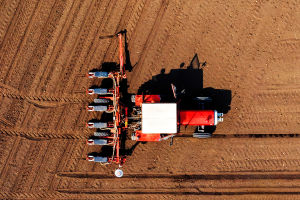From Grain to Green Power
Hey, Lykkers! Ever wondered how those picturesque windmills that dot the landscapes of Europe and beyond came to be?
Let's take a fascinating journey through the history and evolution of windmills, from their humble beginnings as grain grinders to their role in today's green energy revolution.
The Birth of Windmills: A Grinding Necessity
Windmills have been around for centuries, with their earliest known use dating back to ancient Persia around 500-900 A.D. These first windmills were vertical-axis structures, primarily used to grind grain into flour. Farmers harnessed the power of the wind to turn massive stone wheels, making the labor-intensive task of milling grain more efficient. These early windmills were a vital technological advancement for agricultural societies, laying the groundwork for more complex machinery.
European Adaptation: The Rise of the Classic Windmill
As the concept of windmills spread, Europe began to adopt and innovate. By the 12th century, the classic post-mill design emerged in England, characterized by a horizontal-axis. These windmills were built atop sturdy wooden posts, allowing them to rotate to face the wind. The sails of these windmills were cloth-covered frames, similar to ship sails, catching the wind to power the grinding stones inside.
In the Netherlands, windmills took on a new life. The Dutch developed the iconic tower mill, which featured a rotating cap that could be turned to face the wind, and larger sails that made the windmills more powerful and efficient. Dutch windmills weren't just used for grinding grain; they also played a crucial role in pumping water, and helping to reclaim land from the sea. These impressive structures became a symbol of Dutch ingenuity and perseverance.
Industrial Revolution: Windmills in a New Era
The Industrial Revolution in the 18th and 19th centuries marked a significant turning point in the use of windmills. With the advent of steam engines and other more powerful machinery, traditional windmills began to decline in popularity. However, they were not entirely forgotten. In rural areas where steam engines were not practical, windmills continued to serve as vital tools for grinding grain and pumping water.
During this time, the American Midwest saw a surge in the use of windmills, particularly for pumping water in remote areas. The American windmill, often referred to as the windpump, featured a multi-bladed rotor that was highly efficient in capturing wind energy. These windmills became a symbol of the American frontier, helping to sustain life in some of the most challenging environments.
The Modern Era: Windmills Go Green
As the world shifted its focus towards renewable energy in the late 20th century, windmills underwent a dramatic transformation. The simple, quaint windmills of the past evolved into sleek, towering wind turbines. These modern marvels harness wind energy on a massive scale, contributing to the global push for cleaner, sustainable power.
Today's wind turbines are technological wonders, standing hundreds of feet tall with blades that span over 100 feet in length. They generate electricity by converting the kinetic energy of the wind into mechanical power, which is then transformed into electrical energy. Countries like Denmark, Germany, and the United States have invested heavily in wind farms, seeing wind energy as a key player in reducing carbon emissions and combating climate change.
From ancient Persia to modern wind farms, windmills have come a long way. They've transitioned from simple grain grinders to complex, energy-generating giants, all while maintaining their connection to the natural world. Windmills are more than just a piece of history; they're a testament to human ingenuity and our ability to harness the forces of nature for the greater good.
Keep chasing the wind, Lykkers, because it's been guiding us forward for centuries!


